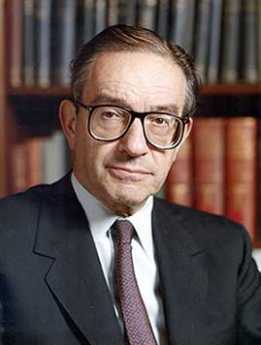Related Topics
Whither, Federal Reserve? (1) Before Our Crash
The Federal Reserve seems to be a big black box, containing magic. In fact, its high-wire acrobatics must not be allowed to fail. Nevertheless, it may be time to consider revising or replacing it.
Setting National Interest Rates

|
| Henry the VIII |
A bank has depositors' money in custody and makes a profit from loans of it. This amounts to borrowing money from depositors at a low-interest rate, then loaning it to borrowers at a higher rate. Banks can also borrow from other banks, or effectively a loan to the Federal Reserve by buying U.S. Treasury bonds. At one time, banks set interest rates for loans by leaning back in the chair and negotiating with the customer; interest rates were whatever the traffic would bear. After a long and complicated history, which includes the Catholic Church's forbidding interest-bearing loans, Henry VIII of England confiscating Church property, the Medici family in Italy and a political battle between Andrew Jackson and Nicholas Biddle, we got to the point where J. P. Morgan more or less decided which banks deserved to fail and neglected to rescue them in the next bank panic. He was in that position because of European, largely British, banking connections. In 1913, the Federal Reserve system was created, with government officials nominally but not totally in charge. Although it now seems pretty natural for the government to be in charge of the nation's money supply, it must be remembered that Robert Morris personally financed the Revolutionary War, Stephen Girard financed the War of 1812 out of his own bank, and J. P. Morgan financed the Spanish American War -- in each case because the government couldn't do it alone. On the other hand, the Civil War (and later, the two World Wars) showed that the nation had outgrown the control of a single private banker. We floundered through gold and silver standards, then bimetallism, then off metal standards entirely.
At the heart of it was an important difference of opinion. The banks were private businesses and didn't want outsiders setting their prices. They particularly didn't want the government to set interest rates after the government itself became a permanently big debtor. It left to them, banks want higher interest rates, governments want lower rates; neither one is a trustworthy referee for the whole country. The 1913 reform locked the two of them in secret struggles within a marble tomb. After eighty years, with one bad inflation, at least two bad depressions, and a dozen stock market crashes, the two combatants seem to have evolved a workable system of agreement on suitable goals and how best to achieve them.
The problem is this. Interstate business and national politics demand uniform national interest rates. But any national rate will be too high for some regions, too low for others. Such an impossible deadlock can only be solved by choosing between tyranny and payoffs. Just how the regional losers in these endless arguments are pacified is not entirely clear, but a recent remark is interesting. One regional governor of the Federal Reserve remarked that you might expect each regional governor to argue for the benefit of his own region, but in fact, there is little of that. No one with experience in politics would conclude from that remark that governors are filled with altruism. But it will apparently take more time before the mechanics of this balancing act are fully understood.

|
| The Federal Reserve Bank |
For now, the Federal Reserve can be described as a place where representatives of the regional banks negotiate with a federal appointee, behind closed doors. The question of enforcing a uniform national interest rate was effectively settled for good, shortly after the creation of the Federal Reserve. Texas defied the national rate and lowered Texas rates to meet Texas conditions. Almost instantly, everybody wanted a loan from Texas banks, but no one would deposit money in them. Texas came crawling back to conformity, and the national rate was thenceforth not only legal and ratified, but it was also seen to be self-enforcing. The European Union has recently gone through the same experience, with everyone learning there is simply no way to cheat the system.
One other thing needs mentioning. Total price control of all interest rates would cause rioting in the streets. India and other countries which tried to nationalize their banks have taken thirty years to recover from the experience. The Federal Reserve only controls short-term interest rates, while long-term bond interest remains set by the marketplace. This seems to work well enough for the purpose of regulating the supply of money, but it affects consumers and small businesses who do most of their borrowing through banks. Large corporations generally borrow money by issuing long-term bonds. This difference in application causes a certain amount of grumbling about fairness. But the wisdom of the arrangement was repeatedly illustrated to President William J. Clinton. We hear it reported that time after time some proposal of his was quashed by his Secretary of the Treasury, Robert E. Rubin, quietly commenting, "The bond market won't let you."

|
| Chairman Alan Greenspan |
That's how matters stood until the 2007-2009 debacle. The bond market was funded by corporations, overseen and controlled by investment bankers in the IPO process, and effectively ceding control of long-term interest rates to the investment banks, and providing them with a somewhat cheaper source of capital because it came in larger lumps, wholesale. It was in tension with, but essentially out of the direct control of, the government in the form of the Federal Reserve. The commercial banks raised capital by collecting deposits in dribs and drabs, a more expensive but more comfortably stable source. Short term interest rates were related to the overnight lending process between banks and controlled by the Federal Reserve. For many years it was satisfactory for the Fed to influence long term rates without directly controlling them, and the resulting prosperity and stability seemed to vindicate this indirection. However, when the far east and middle east started dumping huge amounts of liquidity into the international monetary pool, the carry trade and direct purchase of U.S. Treasury bonds by foreigners started to pull the two main banking systems apart, first destroying the control of the Federal Reserve over long term interest rates, and ultimately short term as well. Chairman Alan Greenspan exclaimed in the 1990s that the peculiar behavior of long term rates was a "conundrum". His successor, Ben Bernanke, was to find it was reversing the process; long term liquidity was affecting short term rates, and hence distorting the monetary supply. That might have been a workable rearrangement, except that the markets froze up in 2007, confusion was suddenly widespread, and panic reaction caused disorderly markets. Whether from confusion, expediency or deliberate choice, the Fed rescued the commercial banks while allowing the investment banks to go under. Those few investment banks who survived did so by wrapping themselves in a shell of commercial banking. They became one-bank holding companies.
It will be some time before we can judge whether Bernanke made the right choice or not. Commercial banking was on its way to extinction when it allowed itself to become an arm of the Federal Reserve, and perhaps instead it should have been allowed to die. Commercial banking based on collecting deposits is a more expensive way to raise capital than borrowing it wholesale. With credit cards, commercial credit, and asset-backed securities, the other functions of banking were effective enough to make it possible that no one really needed any of the products of commercial banks. The one thing investment banking cannot supply is an unchallengeable monetary standard. Having given up gold and other precious metals, having toyed with using real estate as a surrogate monetary standard, having tried oil and other commodities, we are left with government fiat as the world monetary standard, and commercial banking as the only tested way to make that system work. Going back to the origins of coinage in Lydia, governments have universally proven they cannot be trusted with the currency. Nevertheless, there seems to be no alternative in sight.
Originally published: Thursday, June 22, 2006; most-recently modified: Wednesday, June 05, 2019